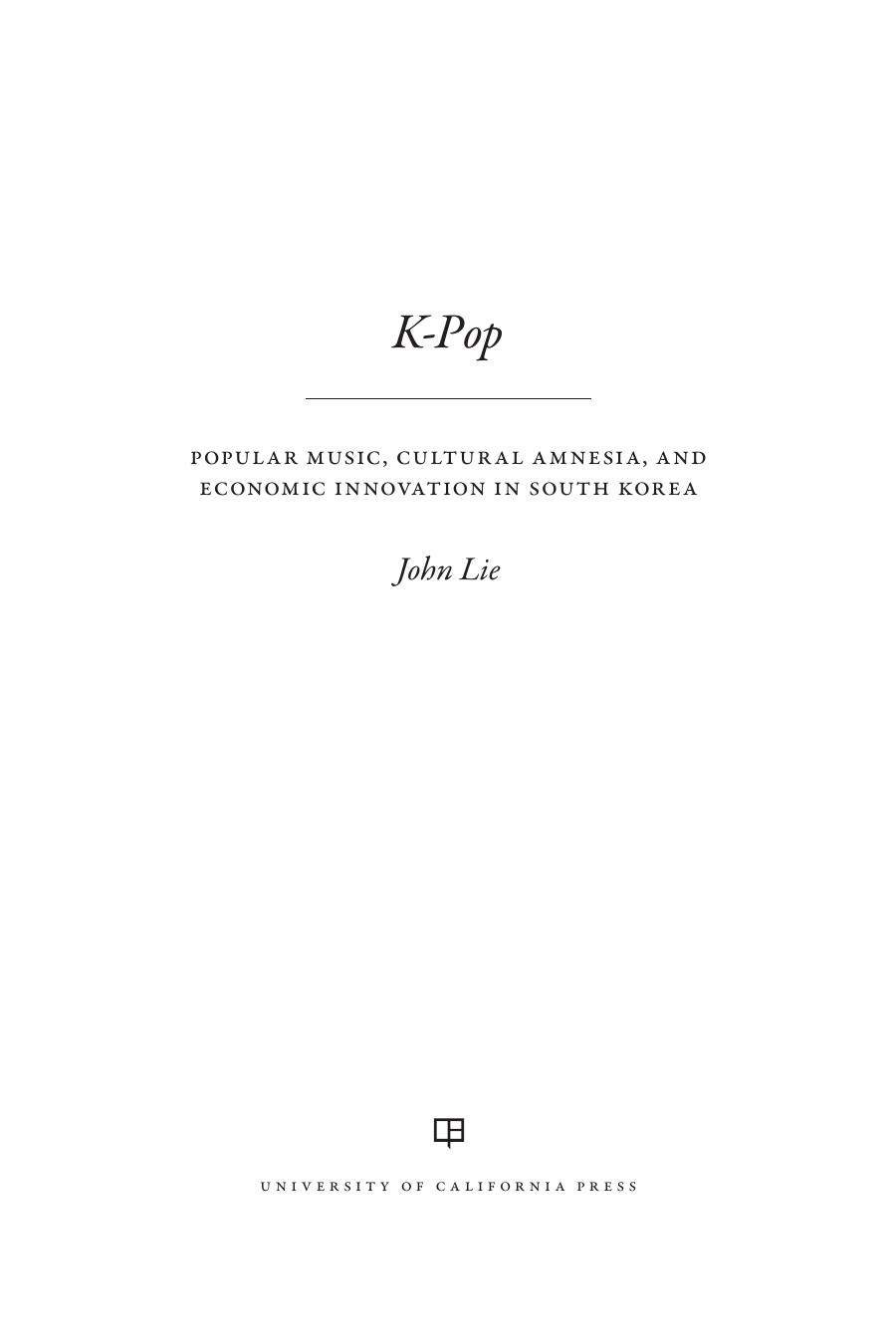K-Pop by Lie John

Author:Lie, John
Language: eng
Format: epub, pdf
ISBN: 9780520283114
Publisher: University of California Press
INTERNAL AND EXTERNAL TRANSFORMATIONS
A studio system does not exist in a vacuum. It must have the means to populate and sustain itself, and it must be able to sell its products beyond its national market. By the turn of the millennium, both of these preconditions were in place for the K-pop system.
A studio system, no matter how perfectly conceived and executed, cannot recruit potential stars in a country devoid of talent, or in a culture that devalues talentâand, as it happens, contemporary South Korea has a large reserve army of potential K-pop stars. In the affluent South Korea of recent decades, popular entertainment has entailed not just listening passively to professional singers but also actively performing in quotidian settings. Although noraebangâspecialized establishments for karaoke singingâdid not open in South Korea until 1991, the karaoke machine, invented in Japan in 1971, had already become a household fixture as well as a ubiquitous feature of bars, churches, restaurants, and virtually every other kind of establishment where South Koreans congregate. Communal singing at family gatherings and religious rituals or in public places is hardly unique to South Korea. As noted in chapter 1, Koreans learned to sing choral songs from Western-inspired musical educators and Christian missionaries. Furthermore, people often entertain themselves by performing music, and in East Asia singing certainly occupies a major role in that regard. Yet South Korea is remarkable for the way in which the primary postprandial entertainment seems to require heading to the nearest noraebang. Of the scores of suppers I have had in South Korea over the past two decades, I can hardly recall a single instance in which this second stage (ichâa) was not suggested, and almost always at an establishment where singing was compulsory. To be sure, television viewing remains a default mode of evening entertainment for adults at home (precollege students are busily studying, by and large, at hagwÅn, the so-called cram schools), and almost every South Korean seems to be staring incessantly at one screen or another, but it remains the norm for urban work colleagues to eat dinner together and possibly engage in a spot of drinking. The night out (more common during the week than on the weekend) tends not to be just about drinking and conversing (even imbibing without simultaneously eating is uncommon) or dancing or other escapades, and the typical destination, across all age groups, is the noraebang. Indeed, noraebang culture is hegemonic, forcing nearly everyone to participate in a collective songfest (even as many South Koreans insist that they hate doing so). Yi Châang-dongâs 2007 film Miryang (Secret sunshine) captures the inextricable intertwinement of everyday life and singing in contemporary South Korea, whether one is crooning alone at home (accompanied by a karaoke machine) or with friends at a local noraebang. Thus did South Korea become a nation of singers, and the singers perform mainly pop songs. It is also not uncommon for young people (and even some old ones) to reproduce K-pop dance steps in public. Furthermore, there
Download
This site does not store any files on its server. We only index and link to content provided by other sites. Please contact the content providers to delete copyright contents if any and email us, we'll remove relevant links or contents immediately.
The Goal (Off-Campus #4) by Elle Kennedy(12435)
Kathy Andrews Collection by Kathy Andrews(10521)
Diary of a Player by Brad Paisley(6866)
What Does This Button Do? by Bruce Dickinson(5527)
Assassin’s Fate by Robin Hobb(5238)
Big Little Lies by Liane Moriarty(4881)
Pale Blue Dot by Carl Sagan(4002)
Sticky Fingers by Joe Hagan(3454)
The Heroin Diaries by Nikki Sixx(2932)
The Death of the Heart by Elizabeth Bowen(2902)
Beneath These Shadows by Meghan March(2718)
The Help by Kathryn Stockett(2704)
Confessions of a Video Vixen by Karrine Steffans(2675)
How Music Works by David Byrne(2527)
Jam by Jam (epub)(2489)
Harry Potter 4 - Harry Potter and The Goblet of Fire by J.K.Rowling(2416)
Strange Fascination: David Bowie: The Definitive Story by David Buckley(2367)
Petty: The Biography by Warren Zanes(2238)
Darker Than the Deepest Sea by Trevor Dann(2208)
